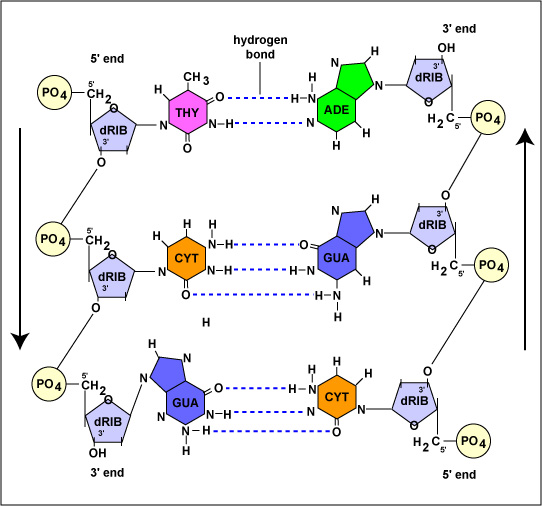Fig. 1: Chemical Structure of
DNA

The phosphate of one deoxyribonucleotide
binding to the 3' carbon of the deoxyribose of another forms the sugar-phosphate
backbone of the DNA (the sides of the "ladder"). The hydrogen bonds between
the complementary nucleotide bases (adenine-thymine; guanine-cytosine) form
the rungs. Note the antiparallel nature of the DNA. One strand ends in a 5'
phosphate and the other ends in a 3' hydroxyl.
Illustration of Interaction Between a Photon and an Atom .jpg by Gary E. Kaiser, Ph.D.
Professor of Microbiology,
The Community College of Baltimore County, Catonsville Campus
This work is licensed under a Creative Commons Attribution 4.0 International License.
Based on a work at https://cwoer.ccbcmd.edu/science/microbiology/index_gos.html.

Last updated: Feb., 2021
Please send comments and inquiries to Dr.
Gary Kaiser
